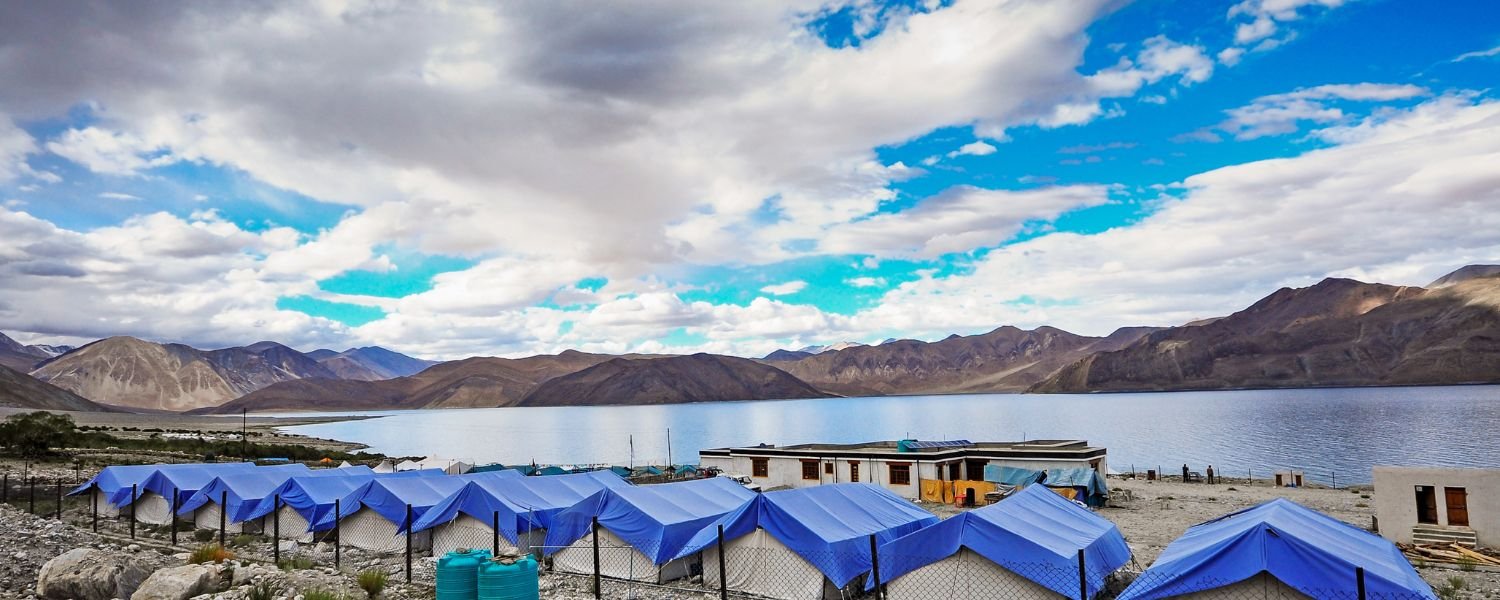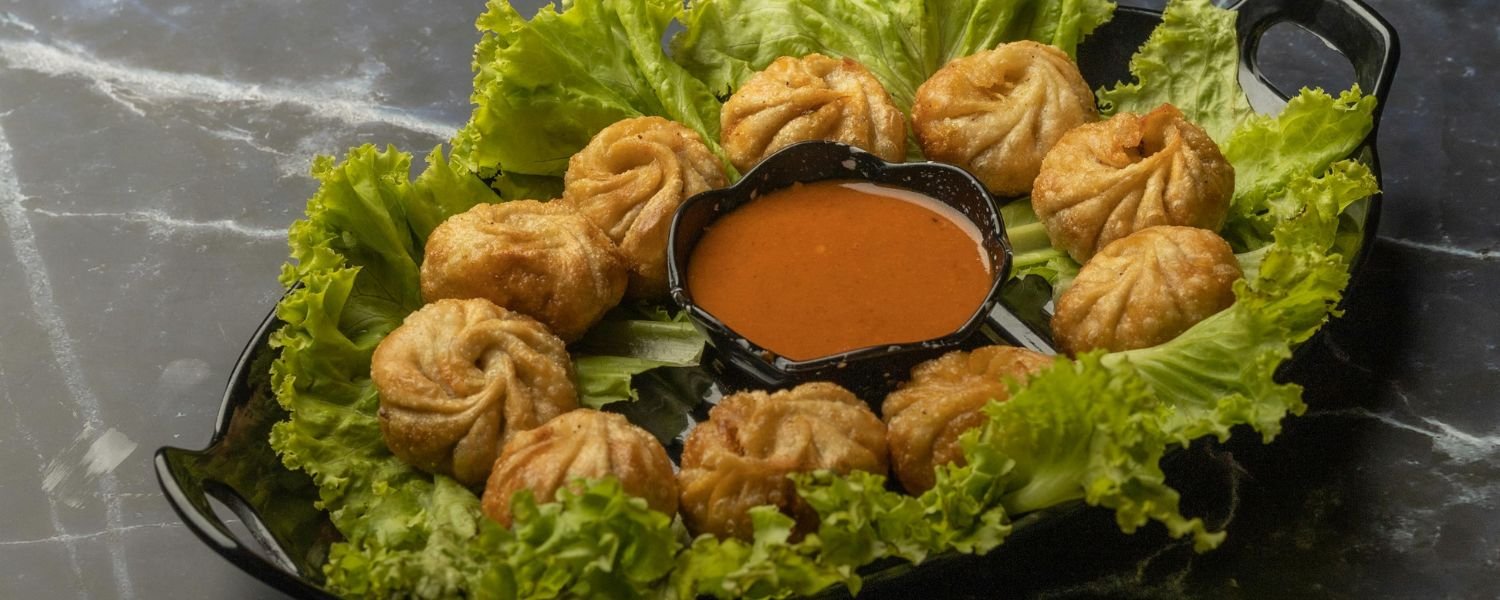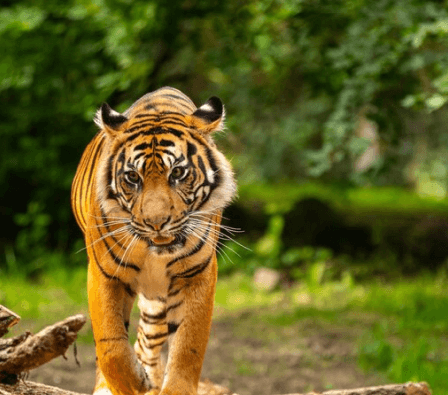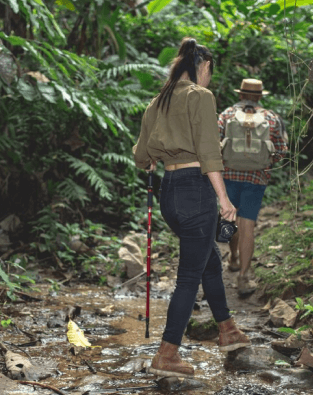One of the world’s most breathtaking natural wonders, Pangong Lake is tucked away between the tall mountains of India’s Ladakh region. It is one of those locations that remain in your memory long after you have left because of its striking blue waters against a dark, vacant background.
Travellers gather on the Indian side of the lake, which is about 135 kilometres long and crosses both China and India, because of its pristine, surreal beauty.
The most outstanding aspect? With an elevation of 4,350 meters, it is a bold location for anyone looking to escape into the unspoiled splendour of nature.
The combination of Pangong Lake’s location, scenic beauty, and cultural significance is what sets it apart.
The lake is home to a variety of wildlife, including migratory birds like the Bar-headed Goose and many more species that live in the nearby desert landscapes, making it more than just a sight to behold.
Pangong Lake promises a trip into one of the most breathtaking landscapes you’ll ever see, whether you’re planning a quick getaway or a more extended stay.
The Reason It’s So Famous
Not only is Pangong Lake famous for its natural beauty, but Bollywood is also primarily responsible for its appeal. The famous scene from the film 3 Idiots, where the main characters have their pivotal conversation by the lake, immediately moved millions of people.
Pangong is a cultural icon that appeals to more than just nature lovers, as it has been a top travel destination and a favourite among Bollywood fans ever since the film’s premiere, often listed among the Best Places Near Ladakh.
The lake draws tourists from all over the world because of its unusual location on the India-China border, which adds a sense of mystery and adventure.
The striking contrast between the blue waters and the surrounding vacant hills enthrals visitors as soon as they arrive.
It’s an unmatched experience for nature lovers and photographers, with breathtaking views everywhere you look. Pangong is a once-in-a-lifetime experience that never ceases to astound and inspire due to its remote, almost otherworldly atmosphere.
What’s Unique About 2025
Pangong Lake is getting even easier to reach as 2025 approaches, thanks to several regional infrastructure upgrades. This year’s road connectivity and improved facilities make it easier than ever to get to the lake.
To preserve the lake’s pristine environment, for example, a stronger focus on sustainable tourism practices is being pushed in the area, and the recently constructed tourism infrastructure along the Leh-Manali highway has made it easier for tourists to get to the lake.
The growth of ecotourism projects near Pangong Lake is another significant development to note for 2025.
Sustainable accommodation and activities around the lake have increased as more tourists choose environmentally friendly travel options.
The emphasis has shifted to responsible tourism, with offerings ranging from solar-powered camps to guided treks that help visitors understand the area’s unique ecology.
This is particularly critical given the lake’s increasing popularity and its urgent need to preserve its weak ecosystem.
A Brief Overview of Pangong Lake’s Location
Pangong Lake is situated in the stunning and isolated Ladakh region, which is hidden away between the majestic Himalayan mountains. Approximately 60% of the lake is in China, and the remaining 40% is in India.
It is located at the border between China and India. Leh, the capital of Ladakh, provides access to the Indian side of the lake. This well-liked tourist destination is a must-visit for any traveller wishing to experience the area.
The lake is one of the highest saltwater lakes in the world, rising an astounding 4,350 meters (14,270 feet) above sea level. The surrounding terrain is a combination of snow-capped mountains and arid desert, making for an almost otherworldly scene.
In addition to its aesthetic appeal, Pangong Lake draws tourists who want to take in the unfiltered beauty of this remote region of the globe.
Size, Salinity, Altitude, and Colour-Changing Water
Pangong Lake, at 4,350 meters above sea level, is a fantastic example of the grandeur of nature. The lake is more than 135 kilometres long and between 2 and 5 kilometres wide. The lake’s salinity is a unique feature despite its vast size.
Pangong is a saline body of water, unlike most freshwater lakes, but because of its high saltwater levels and extremely cold temperatures, it is not a good place to swim.
In the winter, it freezes over, forming a surreal, icy paradise that draws both photographers and adventurers.
The ability of Pangong Lake to change colour is among its most intriguing features. Depending on the time of day and the direction of the sun, the water’s colour changes from clear turquoise to deep blue.
The water’s high mineral content is what gives it this constantly shifting colour palette, which makes it a beautiful sight. A photographer’s dream, the lake’s surface plays of light and shadow provide some of the area’s most stunning views.
Interesting Facts
Films Made Here: You’ve already seen a hint of Pangong Lake’s magic if you’ve seen 3 Idiots. One of the most memorable Bollywood moments is the famous scene where the characters talk by the lake.
This well-known site is a must-see for both audiences and nature lovers because it has been featured in other films, such as Jab Tak Hai Jaan.
Sickness at Altitude Note: Because Pangong Lake is so high up, visitors should be aware of the possibility of altitude sickness, which is frequently experienced in locations higher than 2,400 meters.Headaches, fainting, and feeling sick are possible symptoms.
To reduce the risks, it is essential to get comfortable in Leh before travelling to Pangong. The secret to a comfortable and safe trip is to take it slow, avoid heavy meals, and drink lots of water.
The Perfect Time to Go to Pangong Lake
May through September are the best months to visit Pangong Lake because of the warm weather, which is perfect for outdoor activities and sightseeing. The temperature ranges from 15°C to 30°C during the day and from 5°C to 10°C at night.
Since this time of year also happens to be the busiest travel season, there are lots of amenities, tours, and places to stay in the area. However, the area suffers from severe winter conditions from October to April. During the day, temperatures can drop to -5°C to -10°C, and at night, they can drop to -15°C or lower.
Road closures and limited services make travel difficult, even though the lake freezes over and creates a peaceful, snow-covered landscape.
The roads are open during the summer (May to September), when tourists can go boating, cycling, and trekking. But with the season come crowds and increased prices. The lake’s frozen beauty provides peace and solitude in the winter (October to April), which is ideal for photographers.
However, the severe cold, snowfall, and lack of services make it more challenging to visit during this time.
Summer Pros: Beautiful weather, easily accessible roads, and a lively atmosphere.
Winter Pros: Beautiful, quiet frozen scenery.
Cons: In the summer, there are crowds and higher costs; in the winter, there are harsh conditions and fewer services.

How to travel to Pangong Lake
Pangong Lake can be reached via two main routes:
The most popular route from Leh to Pangong is via Chang La Pass, a 5,360-meter-high motorable pass that is one of the world’s highest. It’s a beautiful, daring drive that offers views of snow-capped peaks and passes through villages.
Depending on the weather and road conditions, the 140-kilometre trip from Leh to Pangong Lake takes five to six hours.
Adventure Seekers: Nubra Valley → Pangong via the Shyok Route: This is a more daring route that passes through the Shyok River Valley and offers stunning views of the mountains and river. It’s a rough, untraveled route that thrill-seekers will love. It takes roughly six to seven hours to travel the 160 kilometres to Pangong Lake.
Information on Permits (ILP): An Inner Line Permit (ILP), which is available in Leh, is required to enter Pangong Lake. Additionally, foreign nationals need special permits, which are obtained through travel agencies.
Options for Transportation:
The best option for comfort and flexibility is a private taxi.
Renting a bike is ideal for daring tourists.
Group Tour: Low-cost, with a guide.
Self-Drive: For seasoned drivers looking for autonomy.
The accommodation at Pangong Lake
Pangong Lake offers a variety of lodging choices to suit all budgets:
Luxury Camps: These offer comfort and stunning views with well-furnished tents, attached bathrooms, and extras like fine dining. Two interesting camps are Pangong Lake Camp and Pangong Lake Camps & Resorts.
Mid-Range Camps/Cottages: These lodging options offer cosy tents and communal restrooms for an authentic experience without going over budget. Popular options are Pangong Lake View Camps and Nirvana Camps.
Budget Homestays: For travellers on a tight budget or those who want to experience the local way of life, homestays provide a customised experience with basic amenities. Chulung Homestay and Ladakhi Homestay are both excellent choices.
Considerations Before Booking:
No electricity after dark: Bring a torch because power may be limited or nonexistent at night.
Most camps have basic shared restrooms.
Restricted network: Be ready for erratic internet and mobile connectivity.
Camping on Pangong Lake

Camping at Pangong Lake is a memorable experience where you could lose yourself entirely in nature. The majority of campsites are tent-based and offer a rough but exciting stay with stunning views of the lake and surrounding mountains.
Whether you go for luxurious glamping or simple tents, the atmosphere is serene with breathtaking sunrises and sunsets. Be prepared for cold evenings, though, as nights can get extremely cold even during the summer.
Although some luxury camps have heating and warm bedding, simpler camps typically have blankets and simple bedding.
Leading Campsites and Providers
Pangong Lake Camps & Resorts offers an elegant stay with great amenities, comfortable beds, and stunning lake views.
Located on the lake’s shores, the Tent Village is a tranquil retreat known for its breathtaking surroundings and friendly staff.
Nomadic Camps: Offering cosy yet simple accommodations for a more authentic, rustic experience.
Items for a Camping Trip
Warm apparel: For cold nights, even during the summer, pack thermals, a hat, gloves, and a heavy jacket.
Power Bank: Due to the limited availability of electricity, a power bank is required for charging devices.
Sleeping Bag: Use a sleeping bag that is rated for cold climates to ensure warmth.
After dark, use a headlamp or torch to find your way around the campsite.
In the dry, high-altitude environment, use a water bottle to stay hydrated.
Sun Protection: To shield yourself from the sun throughout the day, put on a hat, sunglasses, and sunscreen.
Tips for Safety
Altitude-Related Sickness: Acclimatise in Leh before going to Pangong to avoid altitude sickness. Drink lots of water, take it slow, and avoid alcohol.
Cold Nights: Pack enough warm clothing and bedding to stay warm on chilly nights.
Weather Awareness: Because the weather can change rapidly, pay attention to forecasts and be prepared for any unexpected rain or snowfall.
Guided Camping: If you’re unfamiliar with camping or the area, consider a guided trip for safety and local knowledge.
Activities at Pangong Lake
Observing Sunrise and Sunset: Pangong Lake’s sunrise and sunset are genuinely breathtaking. It’s a beautiful sight when the sunrise reflects warm colours on the lake and the sky shifts from dark blue to orange and pink in the morning. To savour these lovely moments, find a quiet place.
Photographic Locations: Pangong Lake is a photographer’s dream come true. Photograph the surrounding dunes, the arid mountains, and the wandering yak herders against the captivating turquoise waters. Additionally, the high-altitude border area makes your shots look better. Remember to bring a tripod so you can take steady photos in shifting light.
Stargazing at Night: Pangong provides a breathtaking night sky view without any light pollution. You can see the Milky Way, planets, and stars on clear nights. Stargazing under a blanket of stars is an unforgettable experience.
Stroll Along the Lake Shore: It’s imperative to take a stroll along the lake’s shore. It offers peaceful views of the surrounding scenery and the lake’s shifting colours, allowing visitors to get in touch with nature.
Interactions with Local Culture: Get to know the yak herders and nomadic families who surround the lake. Discover local crafts, hear tales, and gain insight into their way of life.
Observe migratory birds such as Tibetan Snowcock and Bar-headed Geese of prey, and look for humorous marmots. For the best experience, bring binoculars! Cuisine in Pangong Lake
The Kind of Foods That Are Available
Compared to urban areas, Pangong Lake’s remote location limits the variety of food options available. But the majority of campsites, homestays, and accommodations provide a range of food options, especially Indian and Ladakhi cuisine.
Made with local, fresh ingredients, the meals are usually straightforward but delicious. Prepare wholesome, high-energy meals like rice, dal, and vegetables, with the occasional meat dish. The majority of camps provide both vegetarian and non-vegetarian options.
Nonetheless, it’s a good idea to let your host know ahead of time if you have any special preferences or dietary requirements. You should expect fewer menu options, especially in more rustic settings.
Must-Try Local Ladakhi Cuisine

Make sure to try some of the traditional Ladakhi cuisine while you’re there; it’s nutritious and ideal for the high altitude. Here are some examples to consider:
A hearty noodle soup that can be made with meat or vegetables, thukpa is ideal for cold nights.
Momos: Delectable dumplings with meat or vegetables that can be steamed or fried.
Often referred to as a sort of dumpling soup, chhutagi is a Ladakhi speciality made with flour and either meat or vegetables.
Skyu: A classic Ladakhi dish consisting of meat, vegetables, and wheat that are boiled to create a thick, filling chilli.
Food Safety Advice
Bring Snacks with You: Although the camps provide meals, it’s a good idea to pack some high-energy snacks, such as energy bars, biscuits, nuts or dry fruits, particularly if you’re planning a lengthy walk or trek.
Restricted Options: At high-altitude camps, particularly those situated distant from the major tourist attractions, expect a limited menu. Create meal plans that take advantage of seasonal variations in locally sourced ingredients.
Consume Bottled Water: Although tap water is typically boiled, it’s wise to drink bottled water to prevent stomach problems. In remote locations, exercise caution when eating raw foods or salads.

Important Travel Tips
Here’s everything you need to know to stay safe, comfortable, and eco-conscious during your Pangong Lake adventure.
Health & Altitude Sickness Tips
Pangong Lake is situated at an altitude of about 4,350 meters (14,270 feet), which means you’ll need to take proper precautions for altitude sickness. Symptoms can include headaches, dizziness, nausea, and shortness of breath. Here are some tips:
Spend a few days acclimatising in Leh before heading to Pangong Lake.
Drink plenty of water to stay hydrated, and avoid alcohol and heavy meals.
If you feel unwell, take it easy and rest. If symptoms worsen, descend to a lower altitude and seek medical attention.
Packing Checklist (Clothes, Medicines, Essentials)
When packing for a trip to Pangong Lake, make sure to include:
Warm clothing: Even in summer, temperatures can drop drastically at night. Pack thermal wear, jackets, gloves, and hats.
Medications: Carry any personal medications you may need, along with basic first-aid supplies like band-aids, antiseptic ointment, pain relievers, and drugs for altitude sickness.
Sunscreen & Sunglasses: The sun can be harsh at high altitudes, so bring sunscreen with high SPF and UV-protective sunglasses.
Camera & Power Bank: The landscape is picture-perfect, so don’t forget your camera and a power bank for charging your devices.
Mobile Network & Internet Status
Expect limited mobile network and internet connectivity around Pangong Lake. Most areas have little to no network coverage, so it’s best to inform your family or friends beforehand about your lack of connectivity.
If necessary, you can get a local SIM card in Leh, though service may still be spotty.
Electricity & Charging Facilities
Electricity is limited in many parts of the Pangong region, and most camps and homestays use solar power or generators. After dark, expect little or no lighting, so always carry a flashlight or headlamp. If you need to charge your phone or camera, bring a power bank as charging options may be limited.
Eco-Responsible Travel (No Plastic, Leave No Trace)
Pangong Lake’s pristine environment is fragile, and it’s crucial to minimise your environmental impact. Make sure to:
Avoid plastic: Carry reusable water bottles and refuse single-use plastics. Dispose of trash responsibly.
Leave No Trace: Stick to designated paths and campsites, and leave the environment as you found it. Respect nature, wildlife, and local customs.
The rate Cost Range for the Pangong Lake Trip Cost Breakdown
Depending on the stay you select, accommodation at Pangong Lake can range from luxurious camps to low-cost homestays. This is a rough cost breakdown:
Luxurious Camps: Depending on the season and amenities provided, luxury camps can cost anywhere from ₹3,500 to ₹7,000 per night. These camps usually have hot meals, cosy beds, attached restrooms, and occasionally even heating for chilly nights.
Mid-range campsites and camps: The prices of mid-range accommodations range from ₹2,000 to ₹4,000 per night. These lodgings provide basic facilities like meals, bedding, and shared bathrooms. They balance price and comfort.
Low-Cost Homestays: The least expensive choice is budget homestays, which start at ₹1,000 to ₹2,000 per night. These homestays provide a more naturalistic, local experience along with basic living arrangements, typically with shared amenities.
Cost of Transportation (Fuel, Rent a Bike, Taxi)
Private Taxi: Depending on the vehicle and service type, a one-way private taxi ride from Leh to Pangong Lake will generally cost between ₹3,500 and ₹6,000. It’s best to discuss with the driver about rates because round-trip expenses can differ.
Bike Rental: In Leh, renting a bike (like a Royal Enfield) will run you between ₹1,000 and ₹1,500 per day, not including fuel. You may need to set aside between ₹2,500 and ₹4,000 for fuel and rental fees for the duration of your trip to Pangong.
Fuel Prices: Depending on the type of vehicle, the cost of fuel for a round-trip from Leh to Pangong Lake can range from ₹3,000 to ₹4,000.
Food and Licenses
Food: Meals at camps and homestays typically cost between ₹300 and ₹600 per meal, while full board (breakfast, lunch, and dinner) usually costs between ₹1,000 and ₹1,500 per day.
Permits: To enter Pangong Lake, Indian nationals must have an Inner Line Permit (ILP), which usually costs between ₹200 and ₹500. Additional permits may be required for foreign nationals, and the cost may vary depending on which agency issues them.
Estimated Total Cost for a Two- to Three-Day Trip
Budget Traveller: For a two- to three-day trip (not including travel to Leh), budget between ₹7,000 and ₹10,000 if you choose to stay in a cheap homestay, rent a bike, and eat at unassuming local restaurants.
Mid-range Traveller: For two to three days, a comfortable mid-range trip would cost about ₹12,000 to ₹18,000, which would include meals, lodging in a mid-range camp, and transportation by taxi.
Luxury Traveller: Depending on the amenities and inclusions, a two- to three-day trip would cost between ₹20,000 and ₹30,000 or more if you choose luxury camps and prefer private transportation.
11. Frequently Asked Questions
1. Does Pangong require a permit?
Given that Pangong Lake is located close to the India-China border, an Inner Line Permit (ILP) is required to enter. The ILP is available to Indian nationals in Leh or via travel agencies. A special permit is needed for foreign nationals, and it can be obtained through Leh-registered agencies. All visitors are required to have a license, which you must keep with you while travelling.
2. Can I come in the winter?
Although it’s not for the faint of heart, you can visit Pangong Lake in the winter. During the winter (October to March), the lake freezes over, producing a surreal scene. But the weather is freezing, with lows of -10°C or less. Most accommodations are closed, and snow can make the roads dangerous. Be ready for bad weather and limited services if you want to travel there in the winter.
3. How many days are enough for Pangong?
To explore Pangong Lake, take in the surrounding landscape, and engage in activities like hiking, photography, and stargazing, a two to three-day trip is usually sufficient. It will take a day to travel there and back if you’re coming from Leh, plus an additional day to explore the lake. An extended stay of four to five days might be more appropriate for those who want to add extra activities, like interacting with locals or exploring Ladakh further.
4. Is it safe for families and children?
Families and children can usually feel safe at Pangong Lake, but there are a few things to be aware of:
Height: To prevent altitude sickness, especially in children and senior citizens, make sure you are adequately acclimated before travelling to Pangong.
Cold Weather: Even in the summer, the temperature can drop significantly, so make sure to pack for everyone. Be ready for chilly evenings.
Road Conditions: The roads that lead to Pangong can be difficult, particularly during the winter or monsoon season. Make sure the car is equipped for the terrain if you’re taking kids along.










